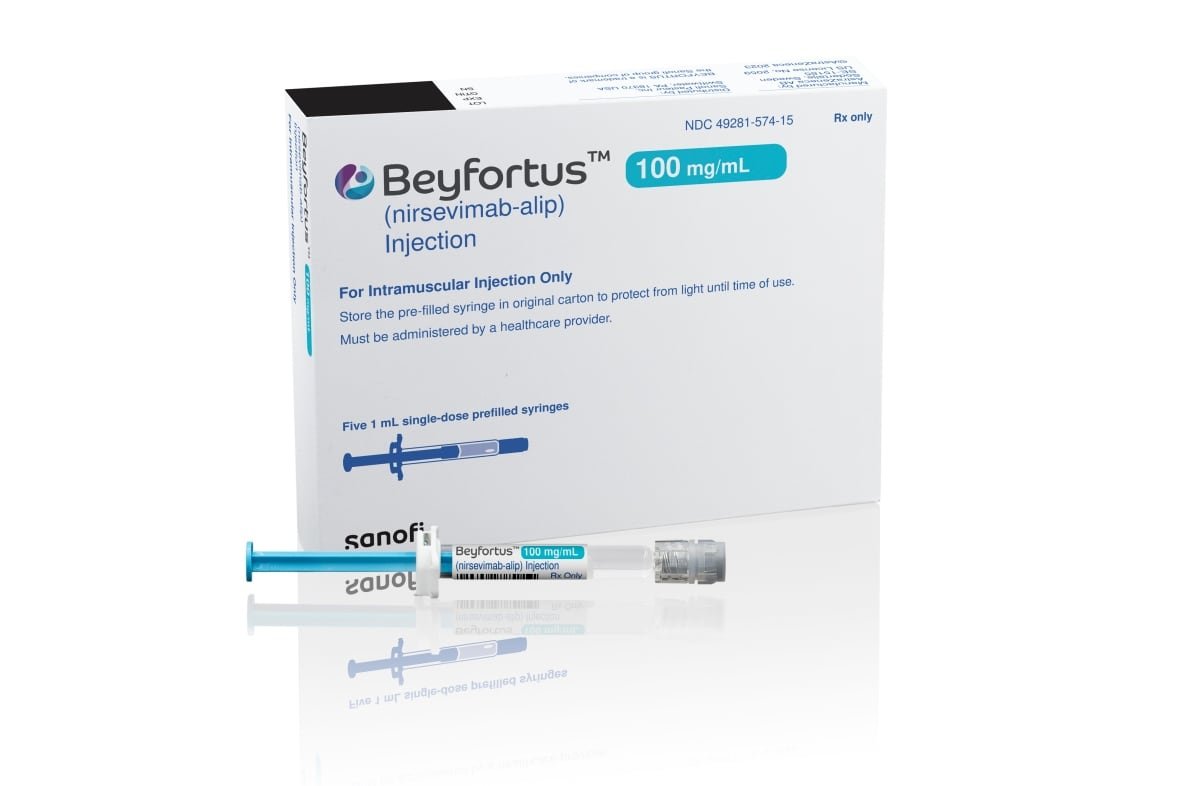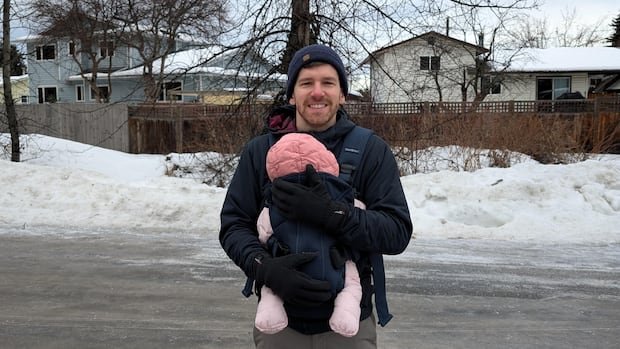When Dr. Patrick Hemmons’s daughter Saoirse was born pre-term late last year, he wanted to protect her ahead of the coming respiratory illness season.
Hemmons, who is a family physician practising in northern British Columbia, wanted to get her a dose of nirsevimab, which can protect babies from respiratory syncytial virus (RSV). But the monoclonal antibody is not widely available in the province, and Hemmons had to travel to a clinic in Seattle to secure a dose for his daughter.
“We were pretty worried before and especially with RSV cases rising throughout the province,” Hemmons said.
“It’s kind of a shame that we had to — in northern B.C. — fly down to Vancouver, drive across down to Seattle and all this hassle to get something that is recommended as something that all infants in Canada should have access to.”
RSV usually causes a minor cold, but can lead to severe illness in vulnerable groups. Older adults and newborns are among those most at risk.
“In young babies, especially during the first few months of life, it’s the time when they’re most vulnerable for the virus to get from their upper respiratory tract and get down into the lungs,” said Dr. Jesse Papenburg, a pediatric infectious disease specialist at Montreal Children’s Hospital.

Nirsevimab is made by AstraZeneca and distributed in Canada by pharmaceutical company Sanofi, under the name Beyfortus.
It was approved by Health Canada in April 2023 and recommended for all infants in their first RSV season — the fall and winter. Health Canada says nirsevimab has shown an 80 per cent reduction in medically attended RSV respiratory tract infection in healthy infants.
‘It needs to be cost effective’
Ontario, Quebec and the territories have negotiated contracts to offer nirsevimab for free to all infants.
The National Advisory Committee on Immunization (NACI), which advises the federal government, decided in May not to recommend nirsevimab for all infants at its current Canadian list price of $952.
Instead, it said to prioritize higher-risk infants, like premature babies, and eventually work toward “a universal RSV immunization program for all infants.”
“It’s safe and it’s something that we would hope to get for all Canadian infants. But again, it is important that the price be such that it would actually be cost effective to implement this intervention because we want to make sure that we’re using our health-care dollars in an efficient manner,” Papenburg said.
“Cost effectiveness is certainly one of the things that needs to be evaluated when it comes to any sort of public health [measure].”
Hemmons said even though his daughter was at risk for contracting RSV because she was pre-term, she wasn’t considered high-risk enough to qualify for nirsevimab in B.C.
The B.C. Infant RSV Immunoprophylaxis Program, which is run through B.C. Children’s Hospital, only gives the antibody to high-risk infants and infants born in certain remote communities.
B.C.’s Ministry of Health says this is because the program has only secured a limited number of doses of nirsevimab.
“Some babies that are in more remote communities, where if they do get an RSV infection transporting them often might require air transport, which is a complication in of itself. It can be not only very costly but medically complicated, and so these babies that are in remote communities are also often prioritized to receive this type of product,” said Papenburg.
Hemmons said he was shocked to learn that the rural and Indigenous communities of Fraser Lake and Saik’uz, where he practises as a family physician, do not qualify as remote and are not eligible for nirsevimab.
The program states Fraser Lake — located a 158-kilometre drive west of Prince George, with a population of 958 people — and its surrounding communities do not classify as remote, whereas Kitimat, with a population of over 8,000 people and a hospital and health centre, is considered remote.
“I think more needs to be done to try and address this inequity right as soon as possible,” Hemmons said.
“I’m encouraged that the B.C. government is at least rolling out a limited rollout of it across certain rural and remote communities, but for the vast majority of infants and their families, they’re going into this RSV season unprotected.”
Papenburg said he hopes to see nirsevimab become more easily accessible across the country.
“Hopefully, you’ll see the product available for all babies as of next year because, really, RSV is the leading cause of hospitalization in Canada during the first year of life and this is a safe and effective product…. But for that to happen, it needs to be cost effective.”














